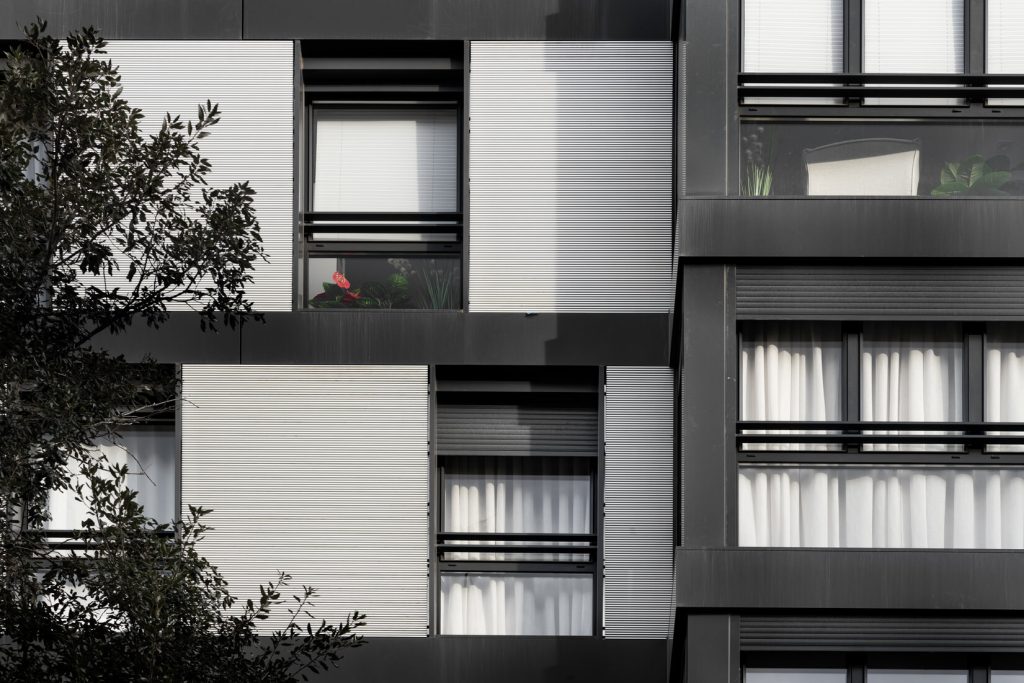The importance of energetic refurbishment to improve the sustainability of the building stock

- Buildings account for up to 40% of energy demand and 36% of CO2 emissions released into the atmosphere in Europe. This is particularly burdensome in Spain, a country with building stock of an average age of 45 years and an E energy rating.
- The Next Generation funds provided by Europe aim to increase the energy efficiency of buildings, which can only be achieved through building refurbishment.
- In this respect, aluminium may be one of the most sought-after materials over the coming years due to its ability to increase the sustainability, efficiency and safety of any construction site where aluminium-based solutions are implemented.
The renovation and refurbishment industry was one of the main drivers of the economic recovery in Spain after the COVID-19 pandemic. However, its period of greatest importance is perhaps not in the past, but in the future.
Today, society, the various administrations and governments charged with representing it, as well as companies, are in a race to find ways to reduce pollutant emissions. The buildings in which we live, work and spend our leisure time play an undeniable role.
Given that we spend more than 80% of our lives in them, it stands to reason that they are also one of the largest consumers of energy on the planet. However, the lack of attention paid to energy efficiency and sustainability during their construction has turned them into black holes that are responsible for up to 40% of the energy demand and 36% of the CO2 emissions released into the atmosphere in Europe.
This situation is particularly serious in Spain, a country with one of the oldest and least efficient housing stock in the old continent. Specifically, more than 83% of buildings and homes are energy inefficient in Spain.
This is a consequence of a building stock that is on average 45 years old, mostly built in the 1980s, a decade in which there were no regulations governing energy efficiency. This has led to an average rating of E.
Therefore, refurbishing the housing stock in the country as a whole is one of the main challenges Spain faces if it wants to bring homes into line with current requirements in order to reduce emissions and comply with the European Green Pact. Without forgetting how reducing the energy consumption of buildings will reduce the electricity bills of Spanish households, as well as making them more independent from the ups and downs of the energy market.
The importance of insulation for more efficient buildings
Against this backdrop, it is not surprising that the refurbishment of homes and buildings to increase their energy efficiency is the main focus of the Next Generation funds. A number of subsidies provided by the European Union which, if fully activated, will lead to a reduction of 650,000 tonnes of CO2 emissions per year, as well as a decrease of more than 30% in the consumption of non-renewable energy in households. This will also lead to a reduction of heating and cooling demand by at least 7%.

A rehabilitation task in which Exterior Thermal Insulation Systems (EIFS) can be our main ally thanks to their ability to reduce energy, heating and cooling costs by up to 70%, according to several studies.
The lack of insulation in buildings leads to the consumption of more energy than necessary, which can lead to an extra cost of over €400 per year per dwelling.
Ventilated façades, the link between energy efficiency and aesthetics
Due to their ability to combine high aesthetic quality finishes with maximum energy efficiency, ventilated façades are becoming the solution that is most commonly used by major architects and modern builders in their renovation and refurbishment projects.
At the same time, materials such as aluminium are increasingly being used in these energy refurbishment works. Its lightness, malleability, high resistance to corrosion, 100% recyclability and very long durability make it the perfect material for implementation in projects that seek to increase the efficiency, performance, useful life and safety of any building.
However, with forecasts estimating the growth of building refurbishment in Spain at 4.8% per year over the period 2022-2024, and after a difficult time in the international logistics chain, perhaps the main challenge professionals and companies in this industry face is to find reliable suppliers that not only ensure the supply of the material required for their work, but also enable them to achieve significant competitive advantages.
Alu-stock, a company with more than 40 years’ experience, has become the reliable supplier for professionals in the refurbishment industry. With the required knowledge and playing a leading role in the development of aluminium both in Spain and in the rest of Europe, they are a dynamic company capable of solving the problems of customers in this industry.
Solutions such as its Falkit® system, for the cladding of all types of surfaces based on tongue and groove aluminium slats, are set to play a leading role in building refurbishment work over the coming years.
Thanks to its simple assembly, variety of profiles and adaptability, it is very versatile so it can adapt to all kinds of uses: ventilated façades, canopies, fairings, interior linings, decorative panels, enclosures for estates, etc. All of these are essential works towards a smarter and more efficient building stock.